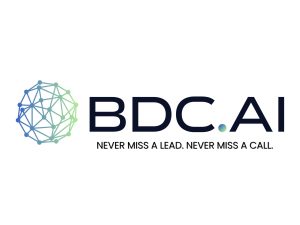Unlock the Truth: Automotive BDC Leads per Shopper

Plus: How the Automotive Industry Defines Duplicate Leads
In today’s digital-first car buying journey, customers are submitting more leads than ever before. With dozens of platforms and tools available—from manufacturer websites to third-party marketplaces—it’s not uncommon for car shoppers to reach out to multiple dealerships before setting foot in a showroom. For BDC car sales teams, understanding how many leads a typical shopper submits and how to define duplicates is critical for effective follow-up and resource allocation.
How Many Leads Does a Car Shopper Typically Submit?
The average car shopper today submits 3 to 5 leads during their search process. This behavior is driven by:
- Price comparisons across multiple dealers
- Inventory checks for a specific vehicle or trim level
- Response time evaluations—some customers simply choose the dealership that replies fastest
For BDC sales teams, this means each lead is more competitive. If a customer sends in 4 leads to 4 different dealerships, it’s not just about being first—it’s about providing the right information, building trust, and delivering an excellent customer experience from the first touchpoint.
The Role of BDC Sales in Managing Multiple Leads
With car shoppers submitting multiple leads, BDC car sales professionals are more important than ever. A dedicated BDC sales team ensures that each lead is handled promptly and professionally. These teams are often the first impression a dealership makes, so speed and accuracy can directly influence whether that customer walks through your door—or someone else’s.
The best BDC car sales strategies include:
- Rapid lead response (under 5 minutes)
- Personalized outreach that references the customer’s vehicle interest
- Ongoing engagement, even if the lead seems “cold”
What is a Duplicate Lead in the Car Dealership Industry?
In automotive, a duplicate lead typically refers to:
- A lead submitted by the same person to the same dealership through multiple sources (e.g., OEM website, third-party listings, or dealership site)
- A lead where the same contact info (phone or email) is used within a short time period (usually 30 days)
- A scenario where a customer follows up multiple times via different channels, creating multiple entries in the CRM
Understanding and properly identifying duplicate leads is essential for BDC sales efficiency. Misidentifying a new lead as a duplicate—or vice versa—can result in missed opportunities or wasted follow-up efforts.
Why Defining “Duplicate Leads” Accurately Matters in BDC Sales
Outdated Systems May Misclassify Valuable Leads
Many dealership CRM systems flag a lead as a duplicate if the shopper uses the same email or phone number, even if the last time they inquired was 5 or more years ago. For BDC sales teams, this outdated logic can lead to serious missed opportunities.
Imagine a customer who submitted a lead in 2019 and reaches out again in 2025. Their buying intent today is fresh—but the system flags it as a duplicate and it gets buried or ignored. Without the right software to manage lead data, your BDC car sales team may never follow up with that prospect.
What the Data Tells Us About Duplicate Lead Risks
Based on aggregated data from dealerships and CRM vendors:
- Up to 15-25% of active leads can be misclassified as duplicates due to shared contact info with older submissions.
- Dealerships using outdated systems risk losing 10–20% of potential sales opportunities annually from overlooked “duplicates.”
- 48% of customers who submit multiple leads do so over different timeframes (not simultaneously), and a rigid duplicate filter can suppress follow-up on re-engaged buyers.
These numbers highlight why BDC sales software must go beyond basic email/phone matching and consider context—such as time gaps, updated vehicle interests, or new ZIP codes.
Questions Dealerships Must Ask About Duplicate Definitions
To keep your BDC car sales team performing at peak, start with an internal audit. Ask:
- How does your CRM or lead management system define a duplicate?
– Is it based only on contact information, or does it account for the time between leads? - Do old leads get suppressed if the shopper returns after several years?
– If yes, you may be treating live buyers like dead leads. - Does your BDC team receive alerts when an old customer submits a new inquiry?
– A good BDC sales system should show this as a high-priority follow-up, not a stale contact.
How to Properly Identify Duplicate Leads in Car Dealerships
Why Smarter Lead Matching = More Sales for Your BDC Sales Team
Accurate duplicate lead detection is essential to the success of any BDC car sales operation. Poorly defined duplicates can cause confusion, lost opportunities, and wasted effort—especially when CRMs flag engaged, ready-to-buy customers as stale or already handled.
The Problem: Over-Simplified Duplicate Rules
Most CRMs define a “duplicate” using one or more of the following criteria:
- Same email address
- Same phone number
- Same full name
But here’s the issue: many of these systems don’t factor in time since last contact, vehicle interest, or lead source, resulting in false duplicates that get filtered out or ignored by BDC sales teams.
Key Industry Data: The Cost of Poor Duplicate Handling
According to CRM benchmarks and dealership analytics firms:
- 22–30% of “duplicate leads” are actually new buying opportunities (e.g., new car interest, different source, or time-lapsed re-engagement).
- Leads marked as duplicates after 90+ days of inactivity are 4.3x more likely to be ignored by sales teams.
- The average dealership loses $55,000 to $130,000/year in missed revenue due to misclassified duplicates (based on average close rates and gross profit per sale).
- Dealers who implement dynamic duplicate rules see a 17–24% increase in lead-to-show ratios through their BDC car sales departments.
Best Practices: How to Properly Identify Duplicates
To accurately identify duplicates—and avoid missing legitimate leads—dealerships should follow these BDC sales best practices:
1. Set a Duplicate Time Threshold
Treat leads submitted 6–12 months apart as new. Only merge them if follow-up shows overlap in vehicle interest or communication.
2. Use Multi-Field Matching
Instead of relying on one field (e.g., email), use composite matching:
- Name + phone number
- Email + ZIP code
- IP address + lead source
This reduces false matches and helps BDC car sales teams respond correctly.
3. Track Lead Intent, Not Just Contact Info
If a shopper shows interest in a different vehicle, different price point, or trade-in, it’s not a duplicate—it’s a new opportunity.
4. Label, Don’t Hide
Instead of auto-merging duplicates, flag them as “potential duplicates” and allow BDC sales agents to review context.
5. Implement AI-Based Duplicate Detection
Modern CRMs with machine learning (like VinSolutions or DealerSocket with AI add-ons) can analyze behavior patterns, timestamps, and source differences to determine duplicate likelihood with higher accuracy.
Final Thought: Don’t Let the CRM Decide for You
Your BDC car sales team should always have visibility and control over what is considered a duplicate. Relying 100% on rigid CRM logic can cost you sales.
Ask yourself:
- How many of your “duplicates” were actually ready to buy—again?
- Are you empowering your BDC sales reps with the context they need to decide?
Better duplicate identification = better follow-up = more deals closed.

